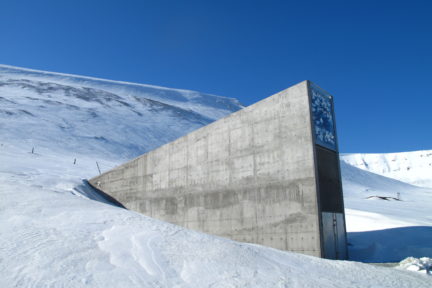
(In Norway they have t-shirts with a picture of a whale and the tag line “Smart food for smart people”. She is also the chef, preparing hearty Nordic breakfasts and dinners of local seal, trout, reindeer and of course… whale. Stuffed polar bears and arctic foxes mingle with old mining equipment and incredible historic photos. Mary-Ann the proprietor is an amazingly sweet lady who has filled the place with the wildest and weirdest eclectica to be found on Svalbard. Mary-Ann’s Polarrigg (entry shown above) known locally as “The Rigg” is a long row of prefab buildings from various eras, mostly leftover from the mining industry.

I do recommend The Future History of the Arctic by Emmerson for anyone interested in the bizarre and increasingly consequential future, present and past of the Arctic region. I will not recount the history of Svalbard in any detail, it is well recorded by many sources including Wikipedia. With the coming of the airport in the 70’s, Longyearbyen changed from a tiny mining town to a University town and adventure tourism destination. He bought the rights to a coal deposit from a Norwegian company and established one of the first permanent outposts on the island. The town of Longyear was founded by an American from Massachusetts of the same name. We caught the local bus to our accommodation – Mary-Ann’s Polarrigg, and even glimpsed the Seed Vault perched just above the airport. The pilot was clearly used to the airport bringing the plane down fast, but touching down without even a bump. We landed in 30 mph crosswinds and driving snow. Huge gore-tex parkas with fur lined hoods and patches reading “Antarctic Survey 1996” abounded. Everyone had shed the usually fashionable northern European winter-wear for serious expedition wear. Crammed onto the plane were Swedish grandmothers, Russian coal miners, scientists and even a couple babies. Aside from its major coal mining activity and arctic scientific research, Svalbard is a winter tourist destination to see the northern lights and wildlife. We re-boarded in Tromsø to find the plane completely packed. This also means that there are a number of refugees on the island, and I suspect they want to keep track of them. The Spitsbergen Treaty, ratified almost a century ago, gives Norway sovereignty over the area, but they have to grant completely equal access, immigration, and commercialization to any signing nation with minimal taxation. I think it has something to do with the unique treaty status of the Spitsbergen Archipelago where Svalbard is. In Tromsø we were asked to exit the plane and go through an ID check. It was a rare clear day, and I was able to see the stunning fjords of Norway as we crossed the 66th Latitude into the Arctic circle. After a couple hours of sleep I met Steve the next morning at the airport hotel breakfast area, and we boarded our SAS flight to Tromsø at the northern tip of Norway. It took three tries to fly out of Munich due to aircraft difficulties that resulted in me arriving at 1:30 am in Oslo. I would be meeting Steve in Oslo the following evening as he was traveling from Washington DC. On February 22nd I boarded a Lufthansa jet bound for Munich out of San Francisco. We quickly booked our complicated flights, and found accommodation in one of the few places to stay in winter. But with persistence and the Scandinavian participation Steve was able to secure us the invite.

However the remoteness of the location and their limited time on site means they really don’t have time to give many tours.

They open the Vault about twice a year to deposit new seed stock and they are apparently inundated with requests to visit. The Seed Vault administrators seem to be a bit overwhelmed with the interest in the Vault. Long Now would cover our accommodations for this scouting trip, and I would cover my own flight. Over the last year he was able to secure funding and collaboration with a Norwegian and a Dutch artist, and with it an official invite to visit the Vault. The Norwegian government management of the vault required that Rowell also get participation from Scandinavian nations, specifically Norway as part of his project. I said that we would as long as I got to come along on one of the trips to Svalbard and meet the creators of the Vault. About a year ago Rowell contacted me to see if Long Now would be interested in participating in his project. The Seed Vault is designed with a 1000 year design life to store back-up samples of every food crop seed in the world. Over the last couple years artist Steve Rowell has been planning a project to document the Svalbard Global Seed Vault as part of a larger project about the beginnings and future of agriculture.


 0 kommentar(er)
0 kommentar(er)
